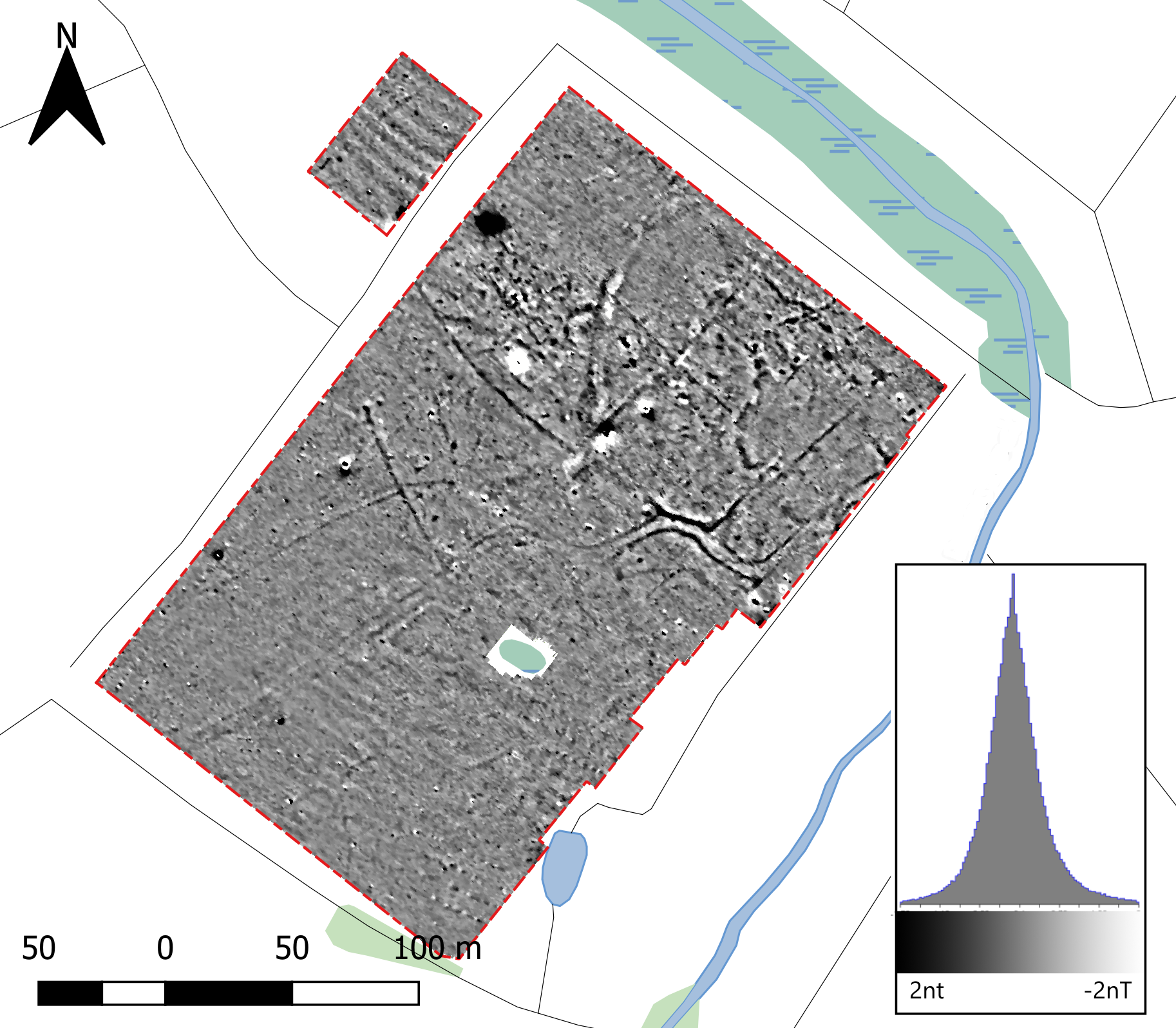Wrexham dig uncovers Roman settlement and rare thought-to-be early Medieval longhouse
Archaeologists have uncovered a Roman settlement and what is thought to be an extremely rare early Medieval longhouse in North East Wales.

The team from the University of Chester, Heneb: the Trust for Welsh Archaeology (Clwyd-Powys region), and the Portable Antiquities Scheme unearthed important structural features and materials dating to the Roman era and, from initial indications, the early Medieval period, during an excavation at a site near the Holt Roman tile and pottery works, in Wrexham.
The archaeological dig, earlier in the summer, was part of a wider University of Chester-funded project investigating Roman Wrexham which began with the first-ever discovery of the remains of a Roman villa in North East Wales.
The team, which included University of Chester students and local volunteers, appear to have found the structure of an early Medieval longhouse - a long, narrow, building for communal dwelling - and a trackway, structures, building materials, ceramics, including a stamped legionary tile, and a fragment of a brooch, revealing there was also a Roman settlement at the site.
.jpg)
The project was led by Chris Matthews of Heneb, Dr Caroline Pudney of the University of Chester and Steve Grenter, former county archaeologist and Heritage Services Manager at Wrexham County Borough Council, with support from Dr Susie White, Finds Liaison Officer for the Portable Antiquities Scheme (PAS Cymru), and metal detectorist Ray Mitchel.
A short documentary on the excavations and discoveries is due to be released later this year.
Dr Pudney, Senior Lecturer in Archaeology at the University of Chester said: “We were very hopeful of finding evidence of Roman life due to previous discoveries and geophysical surveys in the area, not to mention the presence of the legionary tileworks a few fields away, but did not expect our excavations to uncover what is believed to be an early Medieval longhouse.
“The discovery of a Roman settlement is extremely important in building a bigger picture of Roman Wrexham and although early Medieval longhouses have been found in other parts of Wales, to unearth evidence of such a building in North East Wales is extremely rare.”

Mr Matthews, Project Archaeologist and Geophysicist with Heneb, added: “While we are yet to begin the post-excavation investigations, during which all the findings will be analysed, the samples processed and scientific dating obtained, this is potentially a very exciting new find for the region, which could help us to fill in current gaps in understanding about the construction and use of Medieval longhouses.”
The dig followed trial trenching carried out by the Holt Local History Society between 2013 and 2017, during which a significant quantity of Roman ceramics and other objects were recovered. An examination of these artefacts, some of which are now held by Wrexham Museum, led to Heneb and the University of Chester undertaking geophysical surveys which further enhanced the site's archaeological potential.
Despite unfavourable geological conditions, the surveys, which comprised high-resolution magnetometry, revealed a clear outline of a gridded settlement and road system, as well as distinct rectangular structures just outside the settlement boundaries.
Check out more information on Heneb.
Further information on History and Archaeology at the University of Chester is available at:

ENDS
Images:
- Volunteers and University of Chester students excavating the remains of the possible early Medieval building.
- A stamped legionary tile, one of the artefacts discovered.
- An image from the geophysical survey which highlighted the site’s archaeological potential.
- The team on the last day of the excavations.